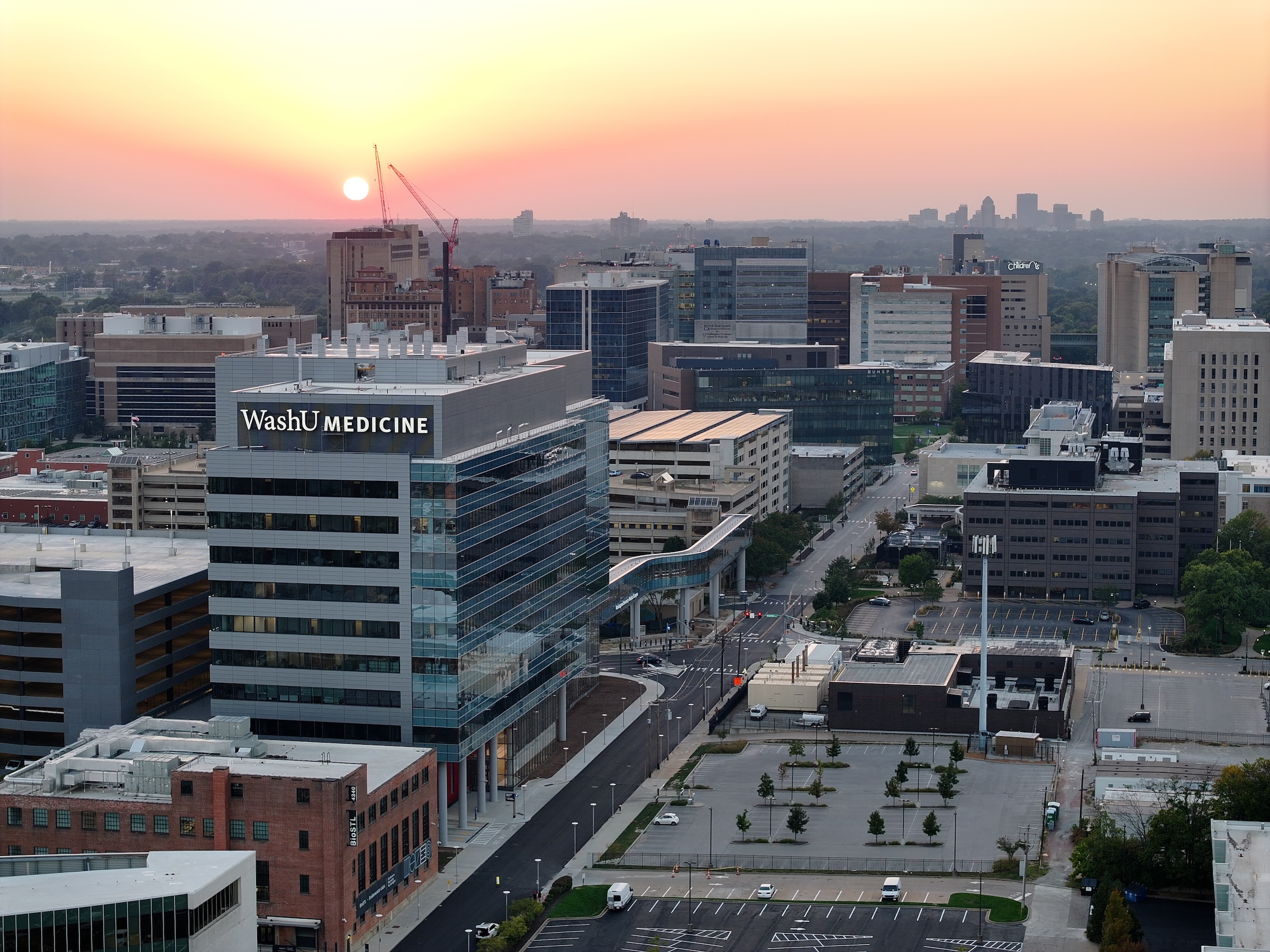In St. Louis’ Cortex Innovation District, Washington University School of Medicine recently opened its new Jeffrey T. Fort Neuroscience Research Building.
Designed by CannonDesign and Perkins&Will, the 11-story, 609,000-sf facility is one of the largest neuroscience buildings in the world, according to a statement from McCarthy Building Companies, Inc., the project’s construction manager.
Intended to advance research in areas such as Alzheimer’s disease and brain tumors, the $616 million facility currently accommodates 1,000 faculty and staff members, including 95 research teams. In the future, additional space could be constructed to accommodate an additional 350 faculty and staff members, including about 145 research teams.
The project faced labor and supply chain challenges when construction started in spring 2020, at the beginning of the COVID-19 pandemic. Despite this, the project finished on budget and on schedule. McCarthy attributes this success to effective pre-project planning and the use of lean construction techniques.
“Early collaboration played a pivotal role in the success of this project,” Andy Poirot, vice president and project executive, McCarthy Building Companies, Inc., said in the statement. “We successfully realized the client’s vision, delivering a cutting-edge research facility poised to enhance lives for generations to come.”
Prefabrication and 3D modeling also helped the team overcome the project constraints. About 90% of the mechanical, electrical, and plumbing (MEP) systems were prefabricated and tested before installation onsite. Prefab components both improved quality and reduced the number of onsite professionals needed for MEP installation. The building’s façade, with a unitized curtain wall, also was prefabricated.
In addition to the research building, the facility features a parking structure with 1,846 vehicle spaces as well as bicycle racks and electric vehicle charging stations. A 1,000-ft elevated pedestrian connection spans 360 ft, connecting the new building to an existing parking garage and surrounding structures. The project also includes a two-story, 24,775-sf utility plant.
The project is designed to achieve LEED Gold certification.
On the Building Team:
Owner: Washington University School of Medicine
Architect of record and structural engineer: CannonDesign
Design architect: Perkins&Will
MEP engineer: Affiliated Engineers, Inc., with CannonDesign also on mechanicals
Construction manager: McCarthy Building Companies, Inc., partnered with Tarlton Corporation and KAI Enterprises
Related Stories
| May 16, 2011
USGBC and AIA unveil report for greening K-12 schools
The U.S. Green Building Council and the American Institute of Architects unveiled "Local Leaders in Sustainability: A Special Report from Sundance," which outlines a five-point national action plan that mayors and local leaders can use as a framework to develop and implement green schools initiatives.
| May 10, 2011
Greenest buildings: K-12 and commercial markets
Can you name the nation’s greenest K-12 school? How about the greenest commercial building? If you drew a blank, don’t worry because our friends at EarthTechling have all the information on those two projects. Check out the Hawai’i Preparatory Academy’s Energy Lab on the Big Island and Cascadia Green Building Council’s new Seattle headquarters.
| Apr 12, 2011
College of New Jersey facility will teach teachers how to teach
The College of New Jersey broke ground on its 79,000-sf School of Education building in Ewing, N.J.
| Mar 15, 2011
What Starbucks taught us about redesigning college campuses
Equating education with a cup of coffee might seem like a stretch, but your choice of college, much like your choice of coffee, says something about the ability of a brand to transform your day. When Perkins + Will was offered the chance to help re-think the learning spaces of Miami Dade College, we started by thinking about how our choice of morning coffee has changed over the years, and how we could apply those lessons to education.
| Mar 15, 2011
Passive Strategies for Building Healthy Schools, An AIA/CES Discovery Course
With the downturn in the economy and the crash in residential property values, school districts across the country that depend primarily on property tax revenue are struggling to make ends meet, while fulfilling the demand for classrooms and other facilities.
| Mar 11, 2011
Oregon childhood center designed at child-friendly scale
Design of the Early Childhood Center at Mt. Hood Community College in Gresham, Ore., focused on a achieving a child-friendly scale and providing outdoor learning environments.
| Feb 23, 2011
“School of Tomorrow” student design competition winners selected
The American Institute of Architecture Students (AIAS) and Kawneer Company, Inc. announced the winners of the “Schools of Tomorrow” student design competition. The Kawneer-sponsored competition, now in its fifth year, challenged students to learn about building materials, specifically architectural aluminum building products and systems in the design of a modern and creative school for students ranging from kindergarten to sixth grade. Ball State University’s Susan Butts was awarded first place and $2,500 for “Propel Elementary School.”
| Feb 15, 2011
LAUSD commissions innovative prefab prototypes for future building
The LA Unified School District, under the leadership of a new facilities director, reversed course regarding prototypes for its new schools and engaged architects to create compelling kit-of-parts schemes that are largely prefabricated.
| Feb 11, 2011
Four-story library at Salem State will hold half a million—get this—books!
Salem State University in Massachusetts broke ground on a new library and learning center in December. The new four-story library will include instructional labs, group study rooms, and a testing center. The modern, 124,000-sf design by Boston-based Shepley Bulfinch includes space for 500,000 books and study space for up to a thousand students. Sustainable features include geothermal heating and cooling, rainwater harvesting, and low-flow plumbing fixtures.















